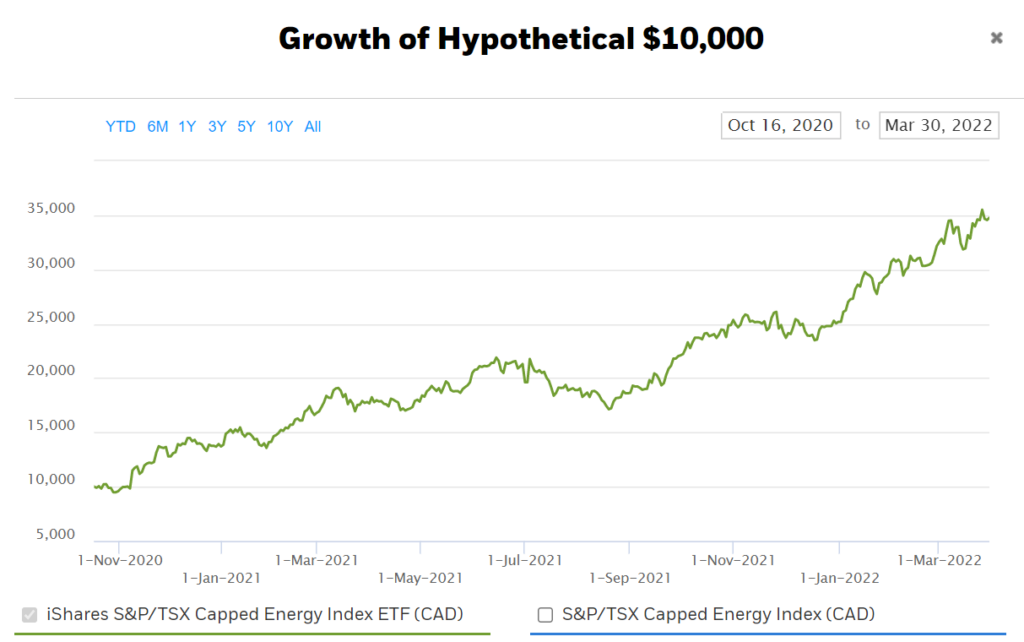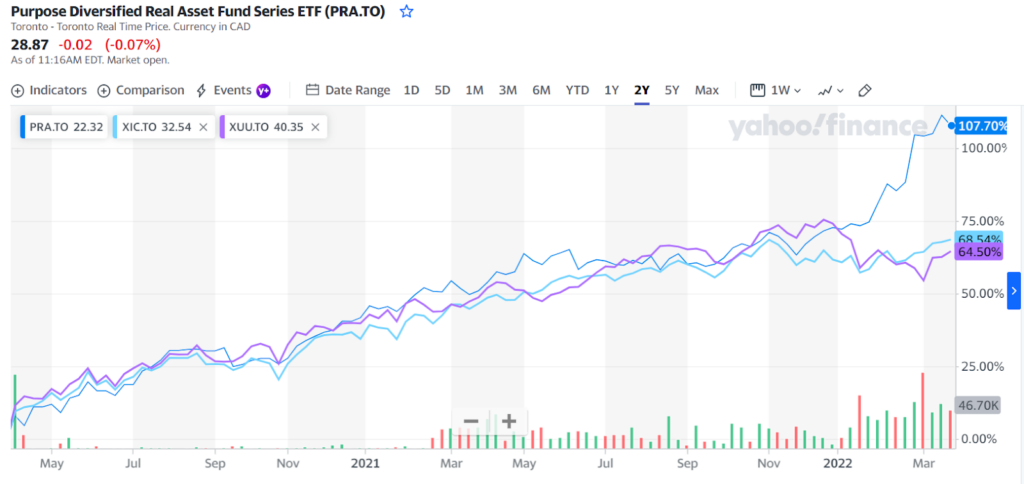Making sense of the markets this week: April 3
Dale Roberts signs off from “Making sense of the markets.” He takes a look back at major themes of the last two years.
Advertisement
Dale Roberts signs off from “Making sense of the markets.” He takes a look back at major themes of the last two years.

Cut the Crap Investing founder Dale Roberts shares financial headlines and offers context for Canadian investors.
After writing this week’s column, I will no longer make sense. My wife will offer that I stopped making sense a long time ago, but that might be in a general sense. 🙂
This will be my last installment for the “Making sense of the markets” column. I am stepping aside. The weekly column will continue with a new writer, soon to be announced.
“Making sense of the markets” has been the best experience of my investment writing career. As you may know, in my previous life, I was an advertising writer and creative director. Those are two drastically different writing styles and disciplines.
In advertising, we are storytellers, where creativity and surprise rules. That said, the advertising experience greatly helped me prepare for my investment adviser stint at Tangerine Investments. The combined advertising and advisor experience perhaps created a different kind of perspective and background that shaped my investment writing.
It also helps that I have been a self-directed investor and an ETF nut for many decades. Some might argue it made me well-suited to write a weekly column covering the crazy world of stock markets and other investments. “Making sense of the markets” has never been boring. There is more drama, surprise, twists and turns, and crazy characters than your typical Hollywood blockbuster.
It, perhaps, helped that I started this column as the COVID-19 was just getting warmed up. The ongoing pandemic introduced a new dynamic that markets and investors have never seen before. There was never a dull week.
I am not sure if markets are always this interesting or the unbroken string of interesting weeks is pandemic-related. The writing of this column certainly made me look at the markets much closer than ever before.
It was an incredible learning experience.
While I am a true believer in a simple core and passive portfolio, I have always played around the edges, with a slant to some active management—so-called “explore” to complement the “core”—that has historically provided an edge with respect to my long-term portfolio performance. Make that outperformance with respect to passive benchmarks.
That said, you do not have to apply any active management to your investment approach. Simple and passive works more than well. MoneySense.ca has been a long time supporter of the core couch potato portfolio. You can keep it simple and keep it cheap.
The research I conducted for this column opened my eyes to the many investment opportunities available in the short term and via a long-term perspective. The markets often react in expected and predictable fashion. I had to get up to speed on how economic factors and conditions can affect the movement of markets, including the direction of sectors.
Perhaps the greatest example is investing in Canadian energy stocks. I shared that theme in this column on an ongoing basis. It was an obvious opportunity and not just in hindsight. Certainly oil prices had to stay above a certain level (let’s say above USD$60 per barrel for argument’s sake) and oil demand needed to recover. But the likelihood of those two events was great, and a very reasonable bet, IMHO. That opportunity has played out in spades and the economic environment has accelerated in a pro-traditional energy sense.
The energy producer index is up 250% from the time of that post on my blog (October 18, 2020).

The index is up over 100% over the last year. I continue to like the space.
The energy surge provides a segue into the theme of inflation, the use of commodities and gold as an inflation hedge. Of course, the storm clouds for inflation began swirling in early 2021, and I mapped the ongoing economic concerns in this column. The fears of inflation soon turned into real and growing inflation.
Here’s the column that looks back at 2021. Inflation concerns were put on the table in January 2021 with more urgency, and commodities were offered as the common-sense hedge. Commodities are the most reliable and robust inflation portfolio hedge.
I will often write:
“You don’t fix a ship in a hurricane.”
OK, I borrow this from Mawer Investments.
That is to say, you don’t wait for inflation or deflation or a severe market correction to prepare your portfolio. You prepare in advance.
It is certainly a fluke that I offered up commodities in the Advanced Couch Potato models just before inflation reared its ugly money-grubbing head. In many periods, gold and commodities can be a portfolio drag. Investors who thought it was a good idea to buy some of that inflation insurance were rewarded.
Here’s the Purpose Real Asset Fund (PRA.TO), which holds a basket of gold plus other commodities and commodity stocks.

In the above chart, you see PRA outperform Canadian and U.S. stocks over the last two years. We see the incredible surge and separation from late 2021, when it was clear that inflation was not transitory.
Will inflation continue to be a serious concern? Who knows? Whether you choose to protect, or not, it’s up to you. I put the ideas on the table—you decide.
Here’s a post that offers more on greater diversification. The post also offers a performance comparison showing the recent benefit of adding commodities exposure to a traditional balanced portfolio.
Growth stocks can also suffer during periods of inflation. With growth stocks, much of the earnings potential is in the future when inflation might eat away at the value of those future earnings. Value stocks (greater current earnings) are back in style, as I’ve covered in this column. It’s no surprise that Canadian markets are on a roll, thanks to more favourable valuations and the resources (commodities) exposure. The Canadian high-dividend space (VDY.TO) (XEI.TO) is outperforming the market (XIC.TO) thanks to even more attractive valuation metrics compared to the TSX Composite.
That juicy dividend outperformance continues with the Beat The TSX Portfolio that was introduced to readers of this column.
As I often mentioned, Berkshire Hathaway is once again a favourite holding with investors. That makes sense given that the company is run by the world’s greatest value investor, Warren Buffett. I like that company as a value play and hedge for major stock market corrections.The company is a major play on insurance and financials, but almost half of the public stock holding is Apple (AAPL).
A few consistent long-term thematics plays that I like include investing in bitcoin and ethereum. Given that I started a position in late 2020, my gains are considerable. That said, I am not in it for the quick return, or even the prospect of outrageous gains. It is a hedge for the modern monetary theory that dominates the policy of many governments of the day.
I will use bitcoin as a portfolio asset (near 5% weighting) and will rebalance on schedule.
And while I currently like traditional oil and gas producers, and Canadian pipelines, I have often acknowledged the obvious long-term prospects for green energy. That investment theme has the global environmental crisis and government policy on its side. Global warming may be one of the weightiest economic forces on the planet.
I am building positions in the green commodities, uranium and the chip makers that will continue to benefit from the move to electric vehicles. I have built a TFSA portfolio at Weathsimple Trade for those assets.
I am putting my money where my mouth is with those ideas. From the end of December 2021, the portfolio is up nicely. I am happy to make that a public portfolio and will share the return and progress on MoneySense and on my blog.
Over time, I plan to build positions in green energy producers.
Emerging markets have been struggling, but I’m still a believer that this may be one of the most beneficial assets over the next 10, 20 years and beyond.
I will still be kicking around the digital hallways of MoneySense. I will cover the couch potato portfolios, the investment themes I’ve outlined above, plus robo advisors, building the retirement portfolio, stock portfolios and more. I will continue to pitch in on the ongoing development of the ETF Finder Tool. That tool will be updated shortly with current yields and returns.
Thanks to MoneySense for the wonderful opportunity. And a special thanks to loyal readers. I enjoyed writing every post.
Well talk soon,
Dale
Dale Roberts is a proponent of low-fee investing, and he blogs at cutthecrapinvesting.com. Find him on Twitter @67Dodge for market updates and commentary, every morning.
Share this article Share on Facebook Share on Twitter Share on Linkedin Share on Reddit Share on Email
Dale, many thanks for your advice and suggestions over the last two years with this MoneySense column! I had taken most of these ‘explore’ trade ideas into my accounts which has worked out quite nicely… you could say that it all made ‘cents’ for me 🙂
I look forward to reading future posts in your blog!
Hi Dale. I very much enjoyed reading your column and it was for me, every week, a required and very insightful reading on every Saturday morning. I especially enjoyed your Canadian perspective on the markets, which is often lacking on the web (even by some other Canadian observers, unfortunately!)
Best of luck and looking forward to still reading you on the Sunday reads 🙂 !
Thanks Glen. I appreciate the comment and support. I will also be back soon on MoneySense.
Dale
Dale I’m going to miss reading your weekly articles. Good luck!
Thank you Dale! I have looked forward to reading your column each week, and have learned so much from you in the past 2 years. Take care and hope to hear from you soon!
Thanks Sylvain, I’m glad you enjoyed the column. And thanks for the ongoing support.
Dale